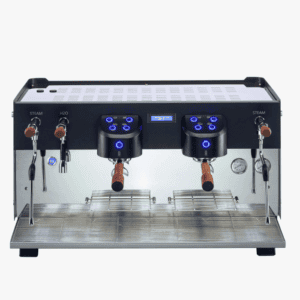Blogs

How to Make Espresso Coffee with an Espresso Machine?
Having a good espresso machine is vital to making an excellent cup of coffee. Considering the widely renowned love for espresso, coffee machines are undoubtedly the most important part of a café’s equipment list. A good machine not only makes the process smooth but also helps you make espresso coffee and enjoy different varieties of coffee.
For cafés and restaurants, choosing a commercial coffee machine is a strategic decision. It allows baristas to focus on creativity and flavor while the machine handles pressure and temperature with excellence.
It is never too late to learn how to achieve this perfection. Here’s a guide on how to make espresso coffee using an espresso coffee machine:

Step-by-Step: How to Prepare Espresso Coffee
Step 1: Select the Best Coffee Beans
All beans are not equal. For preparing espresso coffee that‘s rich and balanced, always use high-quality single-origin beans or espresso blends. Make sure the beans are:
Freshly roasted (preferably 5 to 12 days after roasting).
Not too dark or oily.
Kept in an airtight container to preserve freshness.
Step 2: Grinding to Precision
Espresso needs a fine grind — imagine table salt or granulated sugar in consistency. A good burr grinder lets you adjust grind size and prevents uneven particle distribution. Grind 7–9 grams of coffee for one shot of espresso.
Tip: Invest in a doser grinder that pours grounds straight into the portafilter. This saves waste and provides consistency.
Step 3: Tamping the Coffee
Even tamping ensures uniform extraction. After the grounds are in the portafilter, use a tamper to apply pressure until you encounter resistance. To guarantee that water passes through the coffee uniformly during brewing, the bed needs to be level and compact.
Step 4: Espresso Machine Preparation
Preparation is essential, whether you use a fully automatic, semi-automatic, or manual commercial coffee machine:
To get rid of any remaining residue or cold water, purge the group head.
Place your espresso cup under the group head and securely lock the portafilter.
Start your timer and begin the shot.
Step 5: Pull the Perfect Shot
As the machine extracts the espresso, you should see a thick, golden-brown layer called crema forming on top. A good shot should:
Take 20 to 30 seconds
Yield 1 to 1.5 ounces for a single shot
Smell rich and aromatic
When finished, immediately stop extraction to prevent over-extraction, causing bitterness.
Step 6: Clean and Maintain the Machine
A clean machine is a matter of flavor and longevity. After every shot:
Clean the group head
Clean the portafilter
Wipe down the steam wand (when in use)
Regular deep cleaning of your commercial coffee equipment keeps it providing top-level performance.
Expert Tips for Improved Espresso
Water quality is important. To prevent limescale buildup and unpleasant flavors, always use filtered water.
Steam pressure: Make sure your machine produces enough steam to properly texture milk for beverages that use milk.
Try different ratios: Although classic espresso calls for a 1:2 ratio of coffee to water, little tweaks can result in innovative flavors.

































